Conveyor Covers Are Of Primary Importance When It Comes To Protecting The Transported Materials From Adverse Weather Conditions And Improving Equipment Functionality. However, More Importantly, According To The Latest Health And Safety Regulations, Conveyor Covers Can Protect The Environment From Potential Pollution Caused By Dust Dispersion The Conveyor Cover Is Made Of Corrugated Color Steel Tiles Rolled From Color Steel Plates, And Then Rolled Into A Circular Arc Shape. It Is Installed On Both Sides Of The Belt Conveyor Truss To Protect The Conveyor Equipment, Extend The Service Life Of The Equipment, Reduce Maintenance Costs, Improve Economic Efficiency, And Prevent Dust Diffusion And Environmental Pollution During Material Transportation. The Manufacturer Does Not Stock It In Stock, And The Delivery Time Is Generally 3-5 Days. Urgent Delivery Is Accepted.
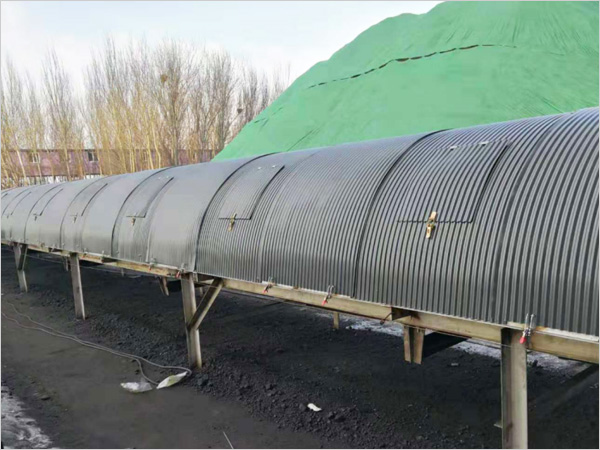
The Material For The Conveyor Cover Is: Pre Painted Steel; Stainless Steel 304; 316; Aluminum Manganese Alloy.
Application Locations: Coal Mines, Power Plants, Metallurgy, Mining, Ports, Cement Plants, Biotechnology, Fertilizer Plants, Etc
Features: Dustproof, Rainproof, Beautiful And Durable, Easy To Install, Convenient To Use
The Size Specifications Are Made According To The Customer's Requirements.
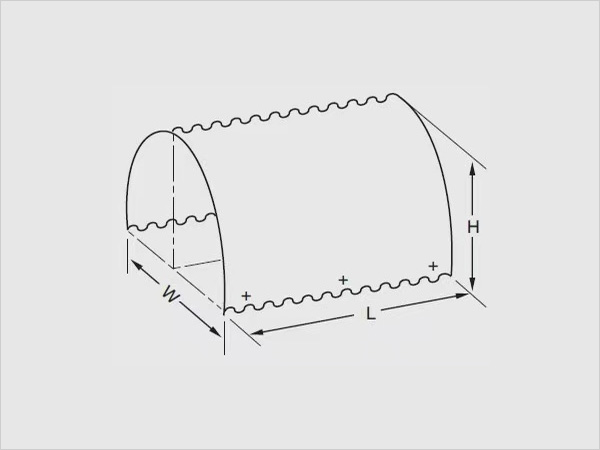
Conveyor Width
|
R |
A |
W |
L |
H |
BFive Hundred | Four Hundred And Twenty-three | Eight Hundred | Eight Hundred And Forty-six | Nine Hundred And Ten | Five Hundred And Seventy-three |
BSix Hundred And Fifty | Four Hundred And Ninety-eight | Nine Hundred And Fifty | 12 Hours A Day 6 Days A Week | Nine Hundred And Ten | Six Hundred And Forty-eight |
BEight Hundred | Five Hundred And Ninety-eight | One Thousand One Hundred And Fifty | One Thousand One Hundred And Ninety-six | Nine Hundred And Ten | Seven Hundred And Forty-eight |
BOne Thousand | Six Hundred And Ninety-eight | One Thousand Three Hundred And Fifty | One Thousand Three Hundred And Ninety-six | Nine Hundred And Ten | Eight Hundred And Forty-eight |
BOne Thousand And Two Hundred | Eight Hundred And Three | One Thousand Five Hundred And Seventy | One Thousand Six Hundred And Six | Nine Hundred And Ten | Nine Hundred And Fifty-three |
BOne Thousand And Four Hundred | Nine Hundred And Twenty-eight | One Thousand Eight Hundred And Ten | One Thousand Eight Hundred And Fifty-six | Nine Hundred And Ten | One Thousand And Seventy-eight |
BOne Thousand And Six Hundred | One Thousand And Twenty-eight | Two Thousand And Ten | Two Thousand And Fifty-six | Nine Hundred And Ten | One Thousand One Hundred And Seventy-three |
B1800 | One Thousand One Hundred And Fifty | Two Thousand Two Hundred And Eighty | Two Thousand And Three Hundred | Nine Hundred And Ten | One Thousand And Three Hundred |
B2000 | One Thousand Two Hundred And Seventy | Two Thousand And Five Hundred | Two Thousand Five Hundred And Forty | Nine Hundred And Ten | One Thousand Four Hundred And Twenty |
B2200 | One Thousand Four Hundred And Ten | Two Thousand Seven Hundred And Fifty | Two Thousand Eight Hundred And Twenty | Nine Hundred And Ten | One Thousand Five Hundred And Sixty |
B2400 | One Thousand Five Hundred And Thirty | Three Thousand And Ten | Three Thousand And Sixty | Nine Hundred And Ten | One Thousand Six Hundred And Eighty |
Method For Measuring The Size Of The Conveyor Hood:
1. Width: Use A Tape Measure To Measure Horizontally At The Widest Point Of The Belt To Obtain The Width Of The Belt. This Is The Key Basis For Designing The Internal Width Of The Dust Cover, Ensuring That The Dust Cover Can Completely Cover The Belt. Generally, The Internal Width Of The Dust Cover Should Be 5-10 Centimeters Wider Than The Belt To Prevent Dust From Rising Out When Materials Overflow.
-Length: Measure The Length Of The Belt Between The Head And Tail Ends Of The Conveyor Along The Direction Of Belt Movement, Providing Reference For The Length Of The Dust Cover. However, Considering That The Conveyor May Have Special Parts Such As Bends And Transitions, The Actual Length Of The Dust Cover Needs To Be Reasonably Extended On This Basis, Generally By 10% -20%, To Ensure Full Stroke Protection.
2. Conveyor Frame:
-Height: Measure Vertically From The Bottom Support Surface Of The Conveyor To The Highest Point At The Top Of The Frame To Understand The Overall Height Of The Frame, In Order To Determine The Height Of The Dust Cover And Ensure Sufficient Space Inside To Accommodate The Operation Of The Belt And Rollers. Usually, The Height Inside The Dust Cover Should Be 15-30 Centimeters Higher Than The Highest Point Of The Frame.
-Width: Measure The Distance Between The Outermost Ends Of The Conveyor Frame On Both Sides, Which Helps Determine The Lateral Dimensions Of The Dust Cover And Ensures That It Can Wrap Around The Frame. Generally, The Outer Width Of The Dust Cover Is 10-20 Centimeters Wider Than The Frame.
3. Roller And Idler:
-Drum Diameter: Measure The Diameter Of Each Drum, And Reserve Appropriate Space For The Dust Cover At The Drum To Avoid Interference. Generally, The Distance Between The Dust Cover And The Edge Of The Drum Should Be Kept At 10-15 Centimeters.
-Roller Spacing And Height: Measure The Distance Between Adjacent Rollers, As Well As The Height From The Top Of The Rollers To The Bottom Of The Frame, Which Helps Determine The Shape And Height Of The Bottom Of The Dust Cover, Ensuring That The Bottom Of The Dust Cover Is Compatible With The Rollers And Does Not Affect Their Rotation.
4. Special Parts:
-Turning Point: If The Conveyor Has A Turning Point, It Is Necessary To Measure The Turning Radius, Angle, And The Length Difference Between The Inside And Outside Of The Belt At The Turning Point. The Dust Cover At The Turning Point Should Be Specially Designed To Ensure A Tight Fit And Not Affect The Turning Of The Belt, Such As Using Bendable Materials Or Segmented Splicing Design
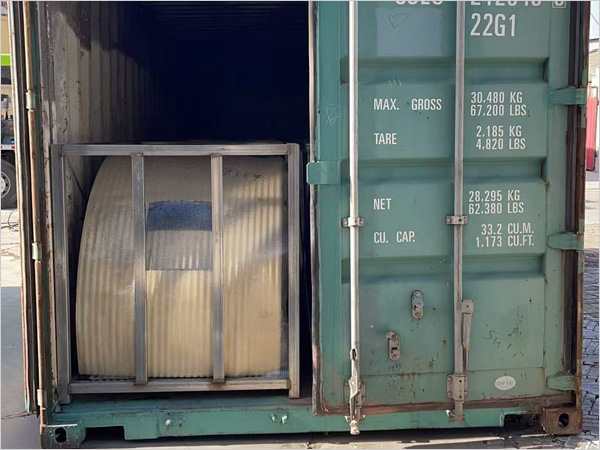
Conveyor Cover Colors: Red, Green, Blue, White, Gray. Colors Can Also Be Customized According To The Raul Color Chart
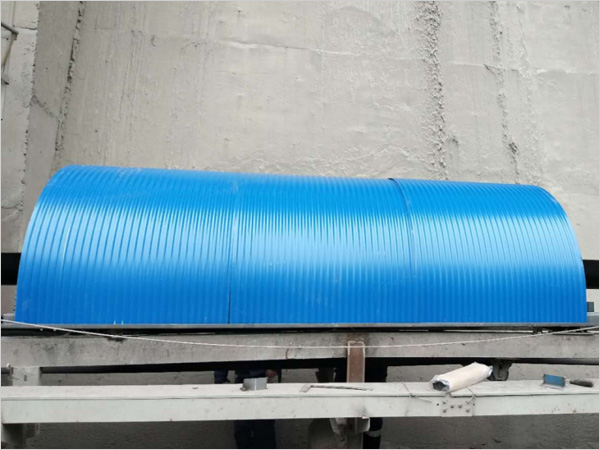
Installation Instructions: (1) Weld Galvanized Angle Iron And Galvanized Z-shaped Purlins On Both Sides Of The Conveyor Belt Truss, Place The Conveyor Cover On Top, And Then Fix It With Hook Nails This Installation Method Is Sturdy And Durable. (2) Galvanized Angle Iron Is Welded On Both Sides Of The Conveyor Belt Truss, And The Conveyor Cover And Angle Iron Are Fixed With Drill Tail Wire. Two Installation Methods, Choose The One That Suits Your Own Enterprise
Note: Z-shaped Purlin Is 3 Meters Long, Hook Nail Specification Is M6, Angle Iron Is 30 * 30 * 2, 10 Cm Per Section
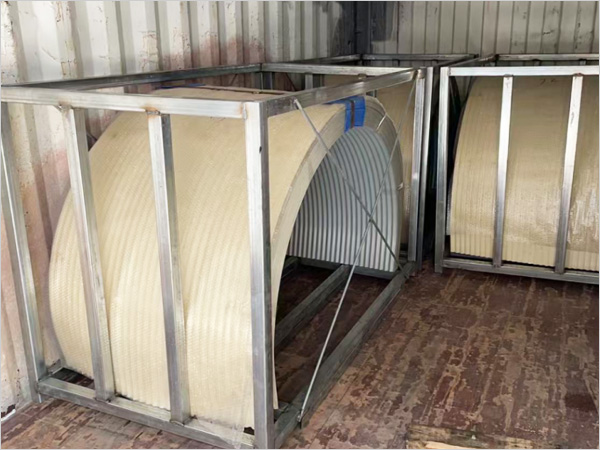
Urgent Service Available On Weekdays
Payment Method: 30% Advance Payment, With Photos Or Videos Taken By The Buyer Before Shipment The Purchaser Shall Pay The Final Payment
Chinese Manufacturer, Welcome To The Factory. Conveyor Hood Transportation And Packaging: We Transport By Land And Sea. We Collaborate With Transportation Suppliers Who Are 100% Committed To Our Customer Service Philosophy, Strictly Adhering To Delivery Deadlines And Real-time Order Status Information. We Usually Use Frame Box Packaging And Manufacture Factory Direct Sales According To Each Customer's Requirements. By Purchasing Directly From Our Factory, You Can Save A Lot Of Costs. Our Streamlined Supply Chain Eliminates Intermediaries, Allowing Us To Offer Competitive Prices Without Compromising Quality.
Batch Order Discount: For Large Projects Or Industrial Applications, We Offer Significant Discounts For Bulk Orders. Please Contact Us To Discuss Your Specific Requirements And Obtain A Customized Quotation That Is Suitable For Your Budget And Project Scale



